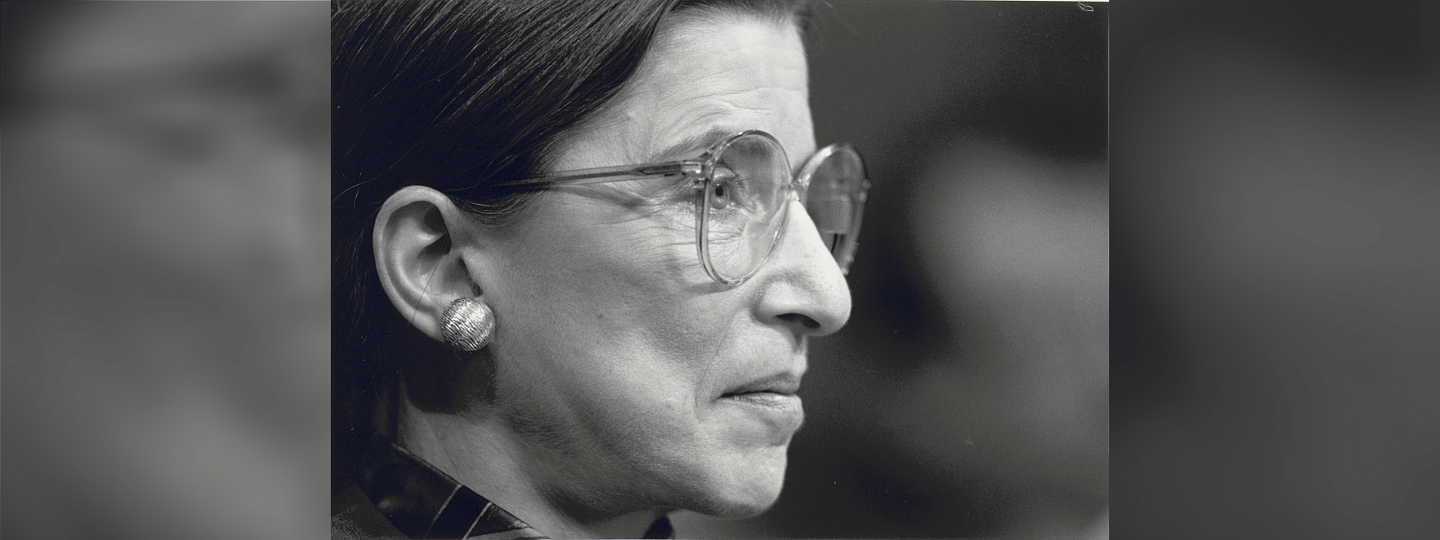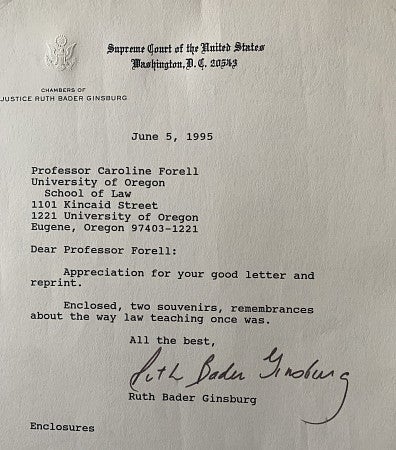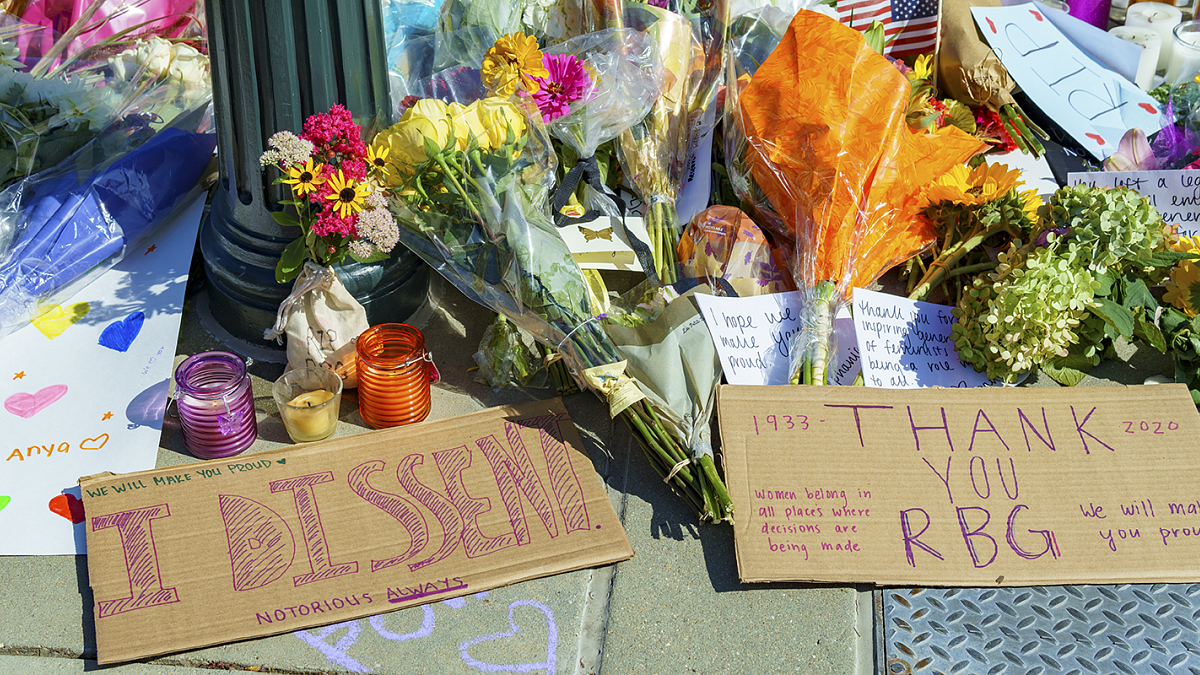

Forell taught Women & the Law for 25 years at University of Oregon School of Law
She is coauthor of the book "A Law of Her Own: The Reasonable Woman as a Measure of Man”
Writing about my hero is both daunting and a great honor. Like so many Americans, I loved Ruth Bader Ginsburg. She has fondly been described as “The Notorious RBG” based on another Brooklynite’s moniker, rapper “The Notorious BIG.” According to Justice Ginsburg’s friend of 50 years, NPR’s Nina Totenberg, she loved being called this and so I will refer to her as RBG here.
RBG was beloved by young and old. Nina Totenberg observed that RBG died on the first day of Rosh Hashanah, which celebrates the Jewish New Year. That made her a “tzaddik” – a person of great righteousness. She was that and so much more.
RBG was immensely popular, especially later in life. When she attended the opera at the Kennedy Center, the audience would stand and cheer her entrance. RBG is also described as a superhero and rock star and has a strong fan base among young men and women. Even my one-year-old grandson had a onesie with “notorious RBG” on it. Her success in making the law recognize that women deserve equal protection under the Constitution made her a cultural icon among a much younger generation. Young women have her image tattooed on them; frankly, that may be my next one.

RBG, Litigator Par Excellence
Starting with Reed v. Reed in 1971. RBG began litigating and winning cases at the Supreme Court for the ACLU. Her mission was to convince the Supreme Court that sex discrimination should receive the same scrutiny as racial discrimination instead of being treated as deserving no constitutional protection unless the law was entirely irrational. This was extremely ambitious but RBG was unstoppable. In 1972, she became the first director of ACLU Women’s Rights Project where she continued her brilliant career as a litigator, carefully selecting cases that reshaped the law concerning discrimination on the basis of sex. Her litigation strategy was to, case by case, persuade the Supreme Court that state sponsored sex discrimination had constitutional dimensions. This gradual chipping away at the existing law led her to be dubbed the Thurgood Marshall of the women’s rights movement.

RBG’s method as a litigator was controversial but brilliant. For most of her cases, she represented men who were alleging sex discrimination. In this way RBG helped the then all-male Supreme Court understand that such discrimination was real and harmful and deserved constitutional protection. RBG focused on the sameness of men and women. For her, laws treating women as different from men, even when they purported to be protective, resulted in women being viewed as “lesser than.” RBG fervently believed that women should have the same opportunities as men. She sought to have the Constitution recognize that Individual men and women should be allowed to prove themselves in all walks of life.
The breakthrough came in the 1976 decision, Craig v Boren. While RBG didn’t argue Craig, it was one of her signature cases. The plaintiff was a young man claiming he was discriminated against because women could buy 3.2 beer under state law at age 18 while men had to wait until they were 21. While the harm seems quite trivial, this was the case where the Court at last created a form of heightened scrutiny for a sex discrimination cases. This was huge progress towards RBG’s goal that the Court to find sex discrimination to merit strict scrutiny like racial discrimination.
On the Court
It was as a Supreme Court Justice that RBG came breathtakingly close to her goal of treating sex discrimination the same as racial discrimination under the Constitution. Her 1996 opinion in US v. Virginia (20 years after Craig) involved the only state supported single sex college in America, Virginia Military Academy (VMI). In an opinion joined by seven out of eight of her fellow justices, she wrote that state-sponsored discrimination based on sex requires an “exceedingly persuasive justification.” Her friend, Justice Scalia, in his blustering dissent, complained that this was in reality, “strict scrutiny.” I’d like to think he was right. The VMI decision also demonstrated that cases have real life impacts. When this case was decided, I doubted more than a handful of women would choose to attend such a place as VMI. I was wrong. In 2018 RBG addressed the VMI corps of cadets; it included 200 women out of the 1700 students.
The Impact of RBG’s Death
I watched the documentary “RBG” (2018) for a second time the other night. I highly recommend it. My first viewing was when I attended its special presentation for law students at the Eugene Bijou movie theater, thanks to David Linde, son of former Oregon Supreme Court Justice Hans Linde. David is CEO of Participant Media which produced both “RBG” and the biopic about Justice Ginsburg, “On the Basis of Sex.” I was the commentator for this showing. Because the midterm elections were coming up, my main message to the UO students in attendance was: “VOTE!” We are now seeing how important elections are in determining who will decide who sits on the highest court in the land. The doctrine of judicial review means that the Court has the last say on what the Constitution means. Bush v. Gore, Roe v. Wade, and Brown v. Board of Education are just three examples of how important that is. With RBG’s passing, never has this been more starkly apparent.
RBG the Hero
RBG always had her eye on the prize. An ardent feminist, she was a woman on a mission. RBG was acutely aware that there had been only men on the Court from America’s founding until Ronald Reagan appointed her friend and colleague, Sandra Day O’Connor. It therefore should have come as no surprise that when asked how many female Supreme Court Justices will be enough she replied: “When there are nine.” Because of RBG, nine women on the Supreme Court is no longer unimaginable. Thank you, Ruth Bader Ginsburg, for teaching American law to take women seriously.

